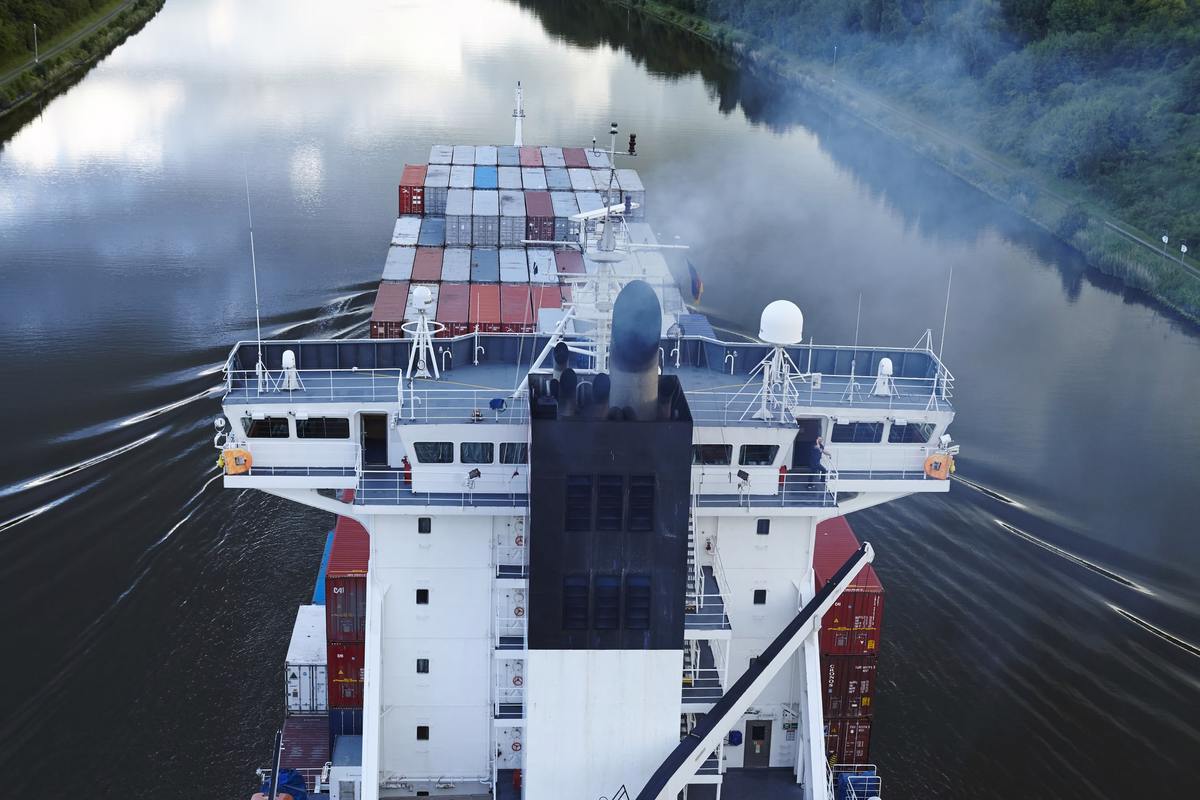ICS calls for a zero-emission fund with IMO's GHG pricing mechanism
The IMO must create a zero-emission shipping fund based on a “fund and reward” or feebate mechanism to help shipping meet its interim targets, the International Chamber of Shipping (ICS) suggested.
 PHOTO: Exhaust fumes from a container ship. Getty Images
PHOTO: Exhaust fumes from a container ship. Getty Images
- Ships must make a flat-rate contribution (per mtCO2e emitted) to the fund
- Contribution rate estimated at $20-400/mt of fuel oil consumed
- Reward rate (per mtCO2e avoided) must be fixed for all fuels
The zero-emission shipping fund will complement IMO's planned (greenhouse gas) GHG pricing mechanism, according to ICS’ updated proposal to the shipping regulator.
Ships must contribute a "flat-rate" contribution for every tonne of carbon dioxide-equivalent (mtCO2e) emitted by them each year to the zero-emission shipping fund (ZESF), ICS recommended.
It calculated a contribution rate ranging between $20-300/mt of fuel oil consumed to raise $5-10 billion/year in funds to help the sector meet IMO's 5-10% zero-emission fuel target by 2030. This investment would help in reducing the cost gap between green fuels and fossil marine fuels, while rewarding the first movers of the green fuel transition, it said.
“The first IMO [zero-emission fuel] target for 2030 is less than six years away. If we don’t achieve a take-off point in the production and uptake of zero GHG marine fuels by 2030, it’s hard to see how net zero will be achieved by 2050,” Guy Platten, secretary general of the ICS, argued.
Through the proposed ZESF, ships will be rewarded for reducing emissions on a well-to-wake basis by using zero- and near-zero fuels. The reward system should provide incentives for the uptake of biofuel blends, ammonia, hydrogen, e-methanol, e-methane and carbon capture and storage.
“The reward rate per tonne of CO2e prevented would be the same for all zero/near-zero GHG fuels and technologies, with rewards per tonne of fuel consumed based on the CO2e conversion factors and energy densities of fuels as determined by the LCA Guidelines.”
Fuel consumption data reported to authorities and IMO will be used to calculate fund contributions and rewards.
“The 2050 goal will only remain plausible if government negotiators now roll up their sleeves to develop the regulations needed to establish the Zero Emission Shipping Fund. A global GHG pricing mechanism for shipping urgently needs to be agreed on next year, which will de-risk investment in zero GHG marine fuels and provide billions of dollars of funds to support developing countries,” Platten added.
A "substantial proportion" of the contributions should be transferred to an IMO maritime sustainability fund (IMSF) to "support the maritime GHG reduction efforts of developing countries." The amount of funds allocated to IMSF should gradually increase once IMO's 2030 zero-emission target is reached.
The proposal, submitted by ICS along with Bahamas and Liberia, will be discussed at the 81st Marine Environment Protection Committee meeting (MEPC 81) in March, ICS claimed.
ICS and the International Bunker Industry Association (IBIA) have also proposed incorporating "energy pooling compliance mechanisms" into the IMO's planned global GHG fuel standard.
By Konica Bhatt
Please get in touch with comments or additional info to news@engine.online






